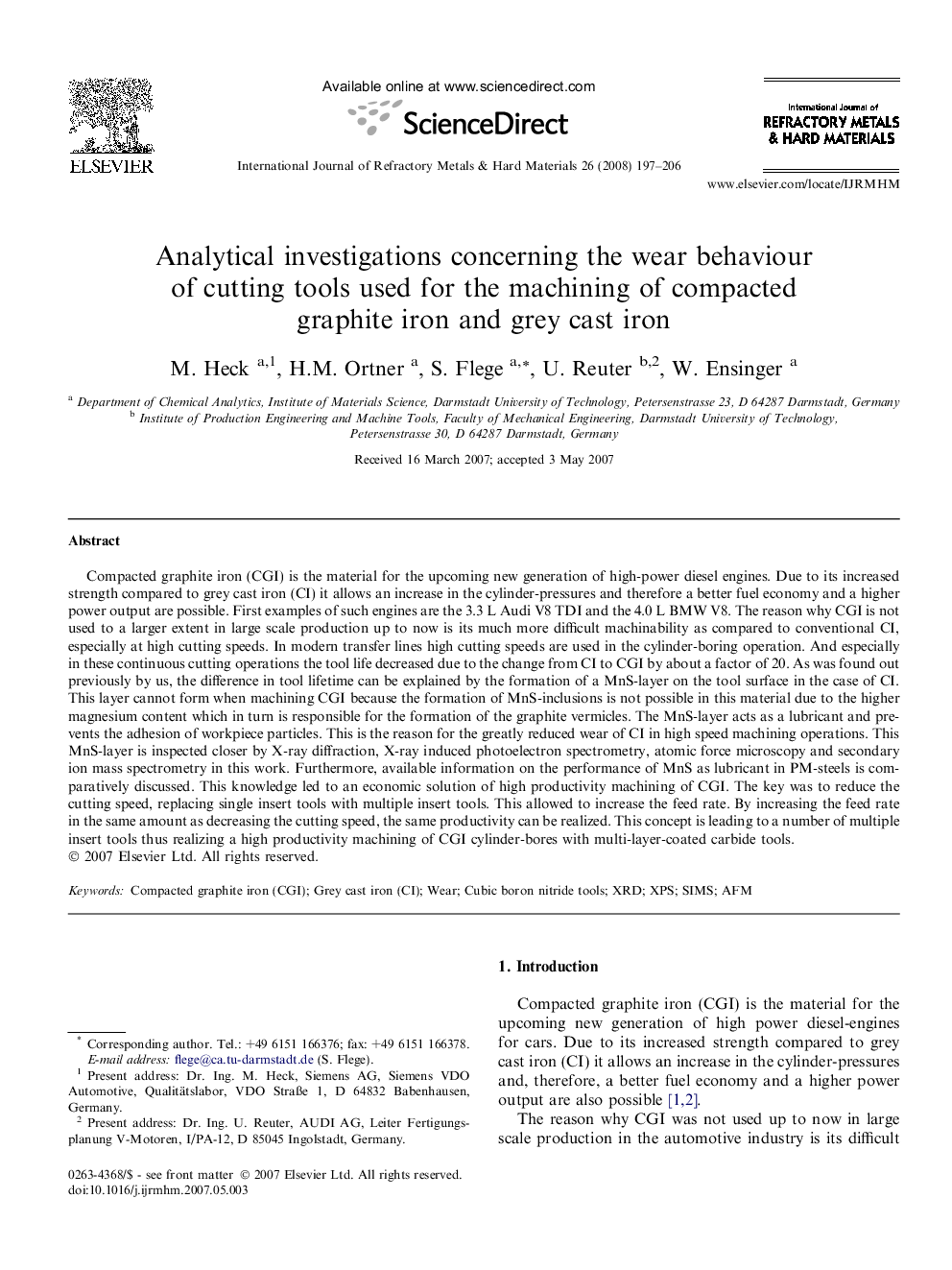| کد مقاله | کد نشریه | سال انتشار | مقاله انگلیسی | نسخه تمام متن |
|---|---|---|---|---|
| 1604296 | 1516012 | 2008 | 10 صفحه PDF | دانلود رایگان |

Compacted graphite iron (CGI) is the material for the upcoming new generation of high-power diesel engines. Due to its increased strength compared to grey cast iron (CI) it allows an increase in the cylinder-pressures and therefore a better fuel economy and a higher power output are possible. First examples of such engines are the 3.3 L Audi V8 TDI and the 4.0 L BMW V8. The reason why CGI is not used to a larger extent in large scale production up to now is its much more difficult machinability as compared to conventional CI, especially at high cutting speeds. In modern transfer lines high cutting speeds are used in the cylinder-boring operation. And especially in these continuous cutting operations the tool life decreased due to the change from CI to CGI by about a factor of 20. As was found out previously by us, the difference in tool lifetime can be explained by the formation of a MnS-layer on the tool surface in the case of CI. This layer cannot form when machining CGI because the formation of MnS-inclusions is not possible in this material due to the higher magnesium content which in turn is responsible for the formation of the graphite vermicles. The MnS-layer acts as a lubricant and prevents the adhesion of workpiece particles. This is the reason for the greatly reduced wear of CI in high speed machining operations. This MnS-layer is inspected closer by X-ray diffraction, X-ray induced photoelectron spectrometry, atomic force microscopy and secondary ion mass spectrometry in this work. Furthermore, available information on the performance of MnS as lubricant in PM-steels is comparatively discussed. This knowledge led to an economic solution of high productivity machining of CGI. The key was to reduce the cutting speed, replacing single insert tools with multiple insert tools. This allowed to increase the feed rate. By increasing the feed rate in the same amount as decreasing the cutting speed, the same productivity can be realized. This concept is leading to a number of multiple insert tools thus realizing a high productivity machining of CGI cylinder-bores with multi-layer-coated carbide tools.
Journal: International Journal of Refractory Metals and Hard Materials - Volume 26, Issue 3, May 2008, Pages 197–206